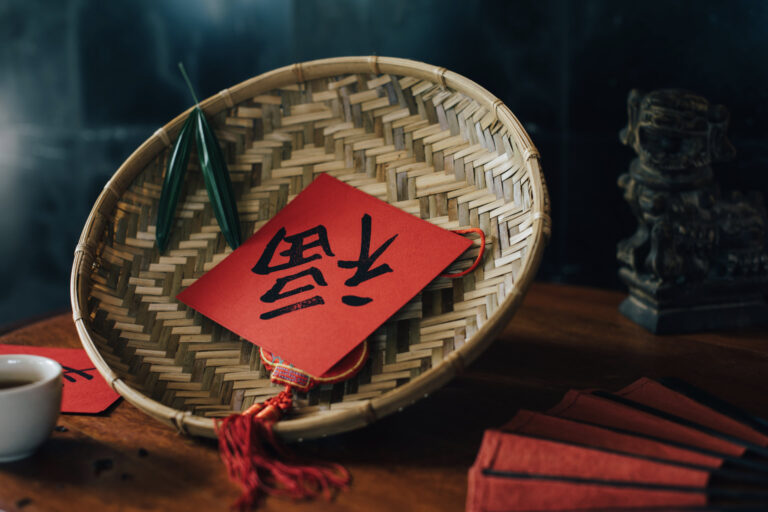The 24 Solar Terms are an integral part of traditional Chinese culture, established over 2,000 years ago to guide agricultural activities. These terms divide the solar year into 24 segments, each corresponding to specific climatic conditions and natural phenomena.
Understanding these terms helps to appreciate how ancient Chinese people harmonized their lives with nature. Below is a detailed exploration of each term, their significance, and their impact on agriculture and daily life.
Table of 24 Solar Terms
24 Solar Terms: Origin and Significance
The 24 Solar Terms were created based on the sun’s position in the zodiac, which reflects the Earth’s orbit around the sun. This system was primarily developed to predict seasonal changes and guide farming activities, as agricultural productivity was crucial for survival.
Each term corresponds to a 15-degree movement of the sun along the ecliptic, marking the changes in climate, natural phenomena, and agricultural tasks. These terms also reflect the ancient Chinese philosophy of living in harmony with nature.
| Solar Term | Chinese Name | Approx. Date | Meaning | Agricultural Significance | Corresponding Western Astrological Sign |
|---|---|---|---|---|---|
| Beginning of Spring | 立春 (Lìchūn) | February 4-5 | Start of spring. | Preparation for new farming activities. | Aquarius |
| Rain Water | 雨水 (Yǔshuǐ) | February 18-19 | Increase in rainfall. | Sowing and planting begin. | Aquarius |
| Insects Awaken | 惊蛰 (Jīngzhé) | March 5-6 | Awakening of insects. | Pest control starts. | Pisces |
| Spring Equinox | 春分 (Chūnfēn) | March 20-21 | Equal day and night. | Balanced growth of crops. | Pisces |
| Clear and Bright | 清明 (Qīngmíng) | April 4-5 | Time of clear weather. | Tomb-sweeping, planting activities. | Aries |
| Grain Rain | 谷雨 (Gǔyǔ) | April 19-20 | Rain beneficial to grains. | Crucial for cereal crops. | Taurus |
| Beginning of Summer | 立夏 (Lìxià) | May 5-6 | Start of summer. | Crop maintenance. | Taurus |
| Grain Full | 小满 (Xiǎomǎn) | May 20-21 | Grains begin to mature. | Protection against drought. | Gemini |
| Grain in Ear | 芒种 (Mángzhǒng) | June 5-6 | Grains like barley ripen. | Harvesting of early crops. | Gemini |
| Summer Solstice | 夏至 (Xiàzhì) | June 21-22 | Longest day of the year. | Peak agricultural work. | Cancer |
| Slight Heat | 小暑 (Xiǎoshǔ) | July 6-7 | Start of the hot season. | Irrigation intensifies. | Cancer |
| Great Heat | 大暑 (Dàshǔ) | July 22-23 | Peak of summer heat. | Protection against drought. | Leo |
| Beginning of Autumn | 立秋 (Lìqiū) | August 7-8 | Start of autumn. | Preparation for harvest. | Leo |
| Limit of Heat | 处暑 (Chǔshǔ) | August 22-23 | End of summer heat. | Harvest preparations intensify. | Virgo |
| White Dew | 白露 (Báilù) | September 7-8 | Dew begins to appear. | Harvesting continues. | Virgo |
| Autumnal Equinox | 秋分 (Qīufēn) | September 22-23 | Equal day and night. | Final harvest of crops. | Libra |
| Cold Dew | 寒露 (Hánlù) | October 8-9 | Dew turns cold. | Late rice harvest begins. | Libra |
| Frost’s Descent | 霜降 (Shuāngjiàng) | October 23-24 | First frost appears. | Last of the harvest. | Scorpio |
| Beginning of Winter | 立冬 (Lìdōng) | November 7-8 | Start of winter. | End of agricultural work. | Scorpio |
| Light Snow | 小雪 (Xiǎoxuě) | November 22-23 | Light snowfall begins. | Conserving warmth and resources. | Sagittarius |
| Great Snow | 大雪 (Dàxuě) | December 6-7 | Heavy snowfalls. | Agricultural activities cease. | Sagittarius |
| Winter Solstice | 冬至 (Dōngzhì) | December 21-22 | Shortest day of the year. | Time for family gatherings. | Capricorn |
| Slight Cold | 小寒 (Xiǎohán) | January 5-6 | Start of the coldest period. | Storing and preserving food. | Capricorn |
| Great Cold | 大寒 (Dàhán) | January 20-21 | Coldest time of the year. | Preparations for the new year. | Aquarius |
24 Solar Terms for the Years 2024, 2025, and 2026
| Solar Term | Chinese Name | 2024 Date & Time | 2025 Date & Time | 2026 Date & Time |
|---|---|---|---|---|
| Slight Cold | 小寒 (Xiǎohán) | January 06, 04:47 AM | January 05, 10:31 AM | January 05, 04:24 PM |
| Great Cold | 大寒 (Dàhán) | January 20, 10:06 PM | January 20, 04:00 AM | January 20, 09:46 AM |
| Vernal Begins | 立春 (Lìchūn) | February 04, 04:25 PM | February 03, 10:10 PM | February 04, 04:03 AM |
| Rain Water | 雨水 (Yǔshuǐ) | February 19, 12:12 PM | February 18, 06:05 PM | February 18, 11:51 PM |
| Insects Awaken | 惊蛰 (Jīnzhé) | March 05, 10:19 AM | March 05, 04:04 PM | March 05, 09:58 PM |
| Vernal Equinox | 春分 (Chūnfēn) | March 20, 11:04 AM | March 20, 04:57 PM | March 20, 10:41 PM |
| Clear and Bright | 清明 (Qīngmíng) | April 04, 02:57 PM | April 04, 08:42 PM | April 05, 02:35 AM |
| Grain Rain | 谷雨 (Gǔyǔ) | April 19, 09:55 PM | April 20, 03:47 AM | April 20, 09:31 AM |
| Summer Begins | 立夏 (Lìxià) | May 05, 08:03 AM | May 05, 01:48 PM | May 05, 07:41 PM |
| Grain Full | 小满 (Xiǎomǎn) | May 20, 08:53 PM | May 21, 02:44 AM | May 21, 08:28 AM |
| Grain in Ear | 芒种 (Mángzhǒng) | June 05, 12:02 PM | June 05, 05:47 PM | June 05, 11:40 PM |
| Summer Solstice | 夏至 (Xiàzhì) | June 21, 04:43 AM | June 21, 10:33 AM | June 21, 04:16 PM |
| Slight Heat | 小暑 (Xiǎoshǔ) | July 06, 10:11 PM | July 07, 03:57 AM | July 07, 09:50 AM |
| Great Heat | 大暑 (Dàshǔ) | July 22, 03:34 PM | July 22, 09:23 PM | July 23, 03:07 AM |
| Autumn Begins | 立秋 (Lìqiū) | August 07, 07:59 AM | August 07, 01:46 PM | August 07, 07:38 PM |
| Limit of Heat | 处暑 (Chǔshǔ) | August 22, 10:43 PM | August 23, 04:31 AM | August 23, 10:16 AM |
| White Dew | 白露 (Báilù) | September 07, 11:00 AM | September 07, 04:49 PM | September 07, 10:41 PM |
| Autumnal Equinox | 秋分 (Qīufēn) | September 22, 08:31 PM | September 23, 02:19 AM | September 23, 08:04 AM |
| Cold Dew | 寒露 (Hánlù) | October 08, 02:49 AM | October 08, 08:39 AM | October 08, 02:31 PM |
| Frost’s Descent | 霜降 (Shuāngjiàng) | October 23, 06:04 AM | October 23, 11:51 AM | October 23, 05:38 PM |
| Winter Begins | 立冬 (Lìdōng) | November 07, 06:12 AM | November 07, 12:03 PM | November 07, 05:54 PM |
| Light Snow | 小雪 (Xiǎoxuě) | November 22, 03:49 AM | November 22, 09:36 AM | November 22, 03:24 PM |
| Great Snow | 大雪 (Dàxuě) | December 06, 11:12 PM | December 07, 05:05 AM | December 07, 10:55 AM |
| Winter Solstice | 冬至 (Dōngzhì) | December 21, 05:18 PM | December 21, 11:04 PM | December 22, 04:53 AM |
Cultural Significance and Agricultural Impact
The 24 Solar Terms guide agricultural activities and are deeply embedded in Chinese culture, marking the rhythm of life and the seasons. Each term has specific rituals, agricultural practices, and festivals associated with it, highlighting the harmonious relationship between humans and nature.
Use the 24 Solar Terms
Understanding the 24 Solar Terms offers a glimpse into the rich cultural heritage of China and emphasizes the importance of living in sync with the natural world.
This system is not just an agricultural guide but also a cultural treasure that continues to influence modern life in China.
What are the 24 Solar Terms in the Chinese calendar?
The 24 Solar Terms are a traditional Chinese calendar system that divides the year into 24 segments based on the sun’s position along the ecliptic. Each term corresponds to specific climatic conditions and is crucial for guiding agricultural activities. They include terms like “Beginning of Spring” (Lìchūn) and “Winter Solstice” (Dōngzhì), reflecting the ancient Chinese understanding of seasonal changes and their impact on daily life.
Why are the 24 Solar Terms important in Chinese culture?
The 24 Solar Terms hold significant cultural and agricultural importance in China. They guide farming activities, ensuring crops are planted and harvested at the right time. Additionally, these terms are embedded in Chinese festivals and traditions, such as the Qingming Festival during the Clear and Bright term, helping to synchronize cultural practices with natural cycles.
How do the 24 Solar Terms affect traditional Chinese festivals?
Many Chinese festivals are closely linked to the 24 Solar Terms. For instance, the Qingming Festival, celebrated during the Clear and Bright term, is a time for tomb-sweeping and honoring ancestors. The Winter Solstice (Dōngzhì) is another significant term that marks the start of winter and is associated with family gatherings and traditional foods like dumplings.
How do the 24 Solar Terms affect traditional Chinese festivals?
Many Chinese festivals are closely linked to the 24 Solar Terms. For instance, the Qingming Festival, celebrated during the Clear and Bright term, is a time for tomb-sweeping and honoring ancestors. The Winter Solstice (Dōngzhì) is another significant term that marks the start of winter and is associated with family gatherings and traditional foods like dumplings.
How are the dates of the 24 Solar Terms determined?
The dates of the 24 Solar Terms are determined by the sun’s position along the ecliptic, with each term marking a 15-degree segment of the sun’s annual journey. This precise calculation ensures that the terms accurately reflect seasonal changes, guiding agricultural activities and traditional celebrations in alignment with natural phenomena.
Can the 24 Solar Terms be used for modern-day activities?
Yes, the 24 Solar Terms can still be used today for gardening, farming, and even lifestyle adjustments. By following these terms, one can align daily activities with natural cycles, optimizing agricultural productivity and maintaining harmony with nature. They also serve as a cultural guide for seasonal traditions and celebrations.
How do the 24 Solar Terms influence health and wellness practices in China?
In traditional Chinese medicine, the 24 Solar Terms are used to guide health and wellness practices. Each term is associated with specific dietary recommendations, exercise routines, and lifestyle adjustments to maintain balance and harmony within the body. For example, during the Great Heat (Dàshǔ), it’s advised to eat cooling foods and avoid strenuous activities to prevent heat-related illnesses.



